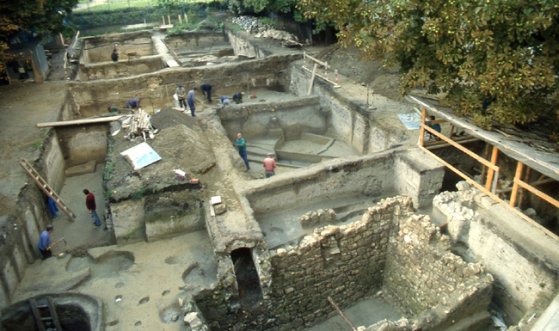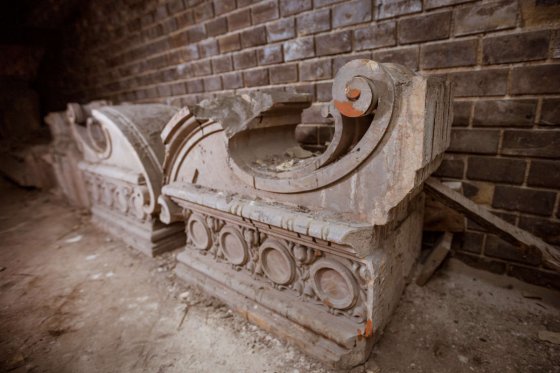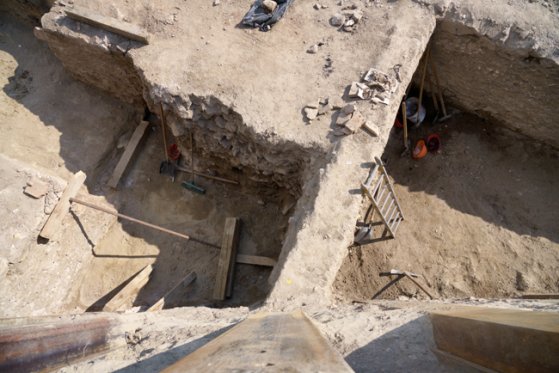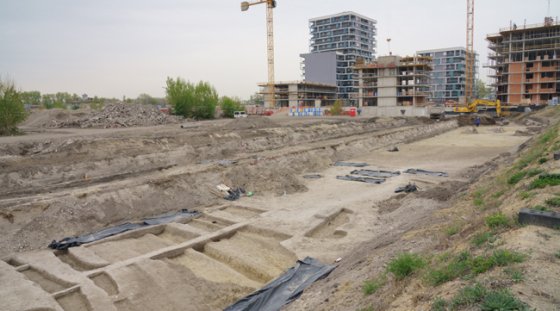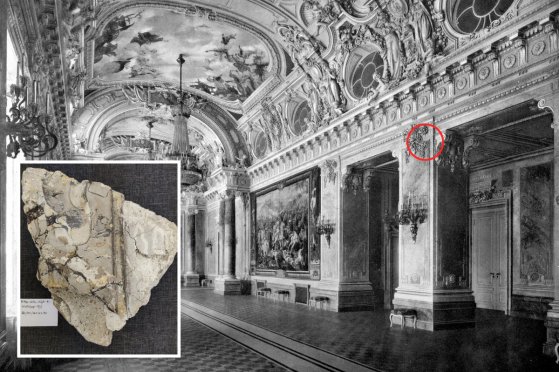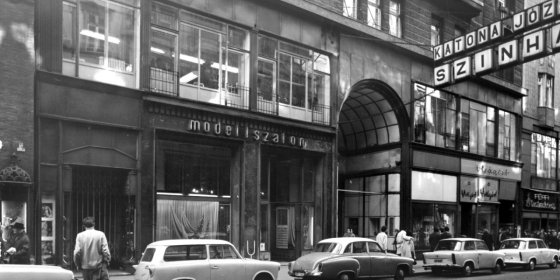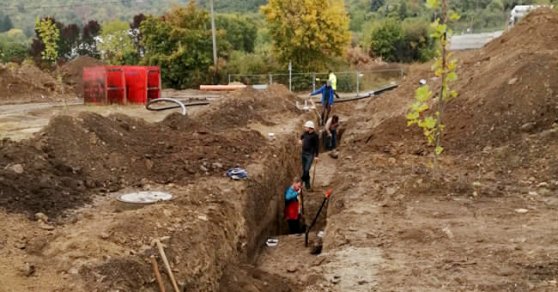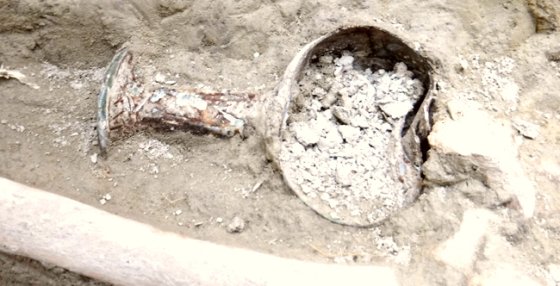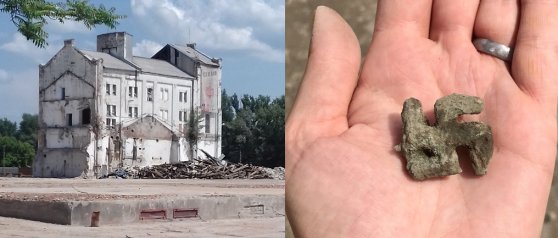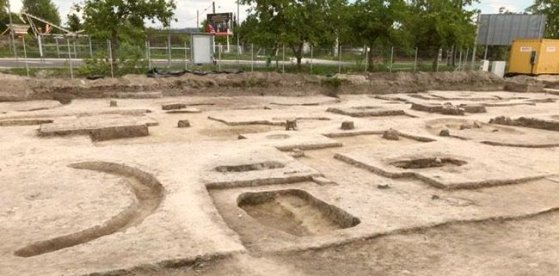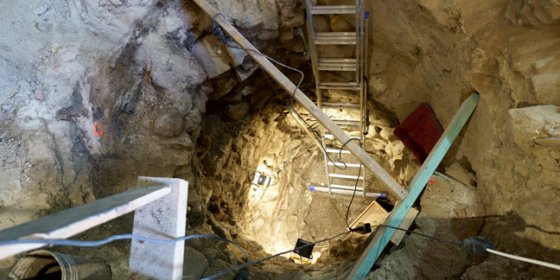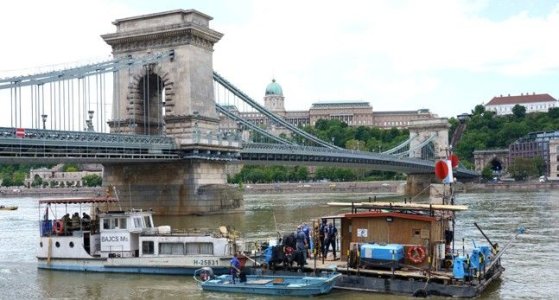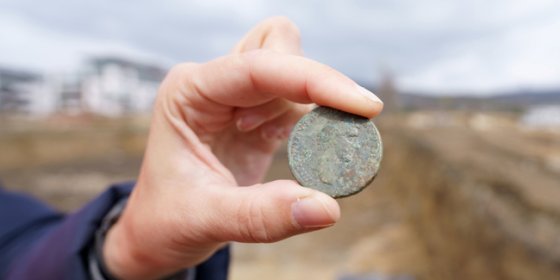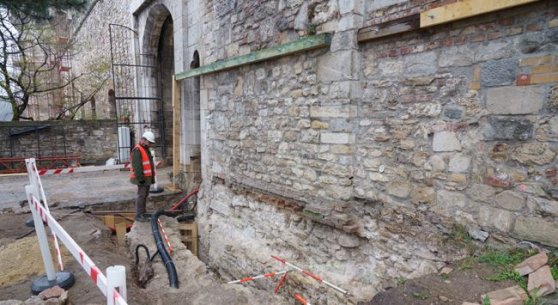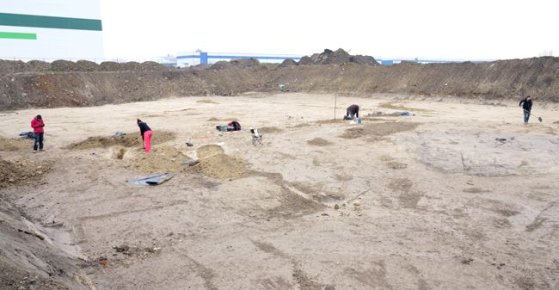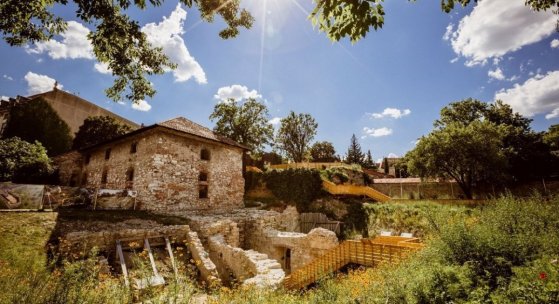 The „intertwined history” of the bridges and the city of Budapest
Which ideas and events have shaped the fate of bridges of Budapest and the cityscape? Alongside many other interesting facts, this question is also answered this newly published book by the Budapest City Archives, which introduces the history of bridges in Budapest.
The „intertwined history” of the bridges and the city of Budapest
Which ideas and events have shaped the fate of bridges of Budapest and the cityscape? Alongside many other interesting facts, this question is also answered this newly published book by the Budapest City Archives, which introduces the history of bridges in Budapest.
archeology
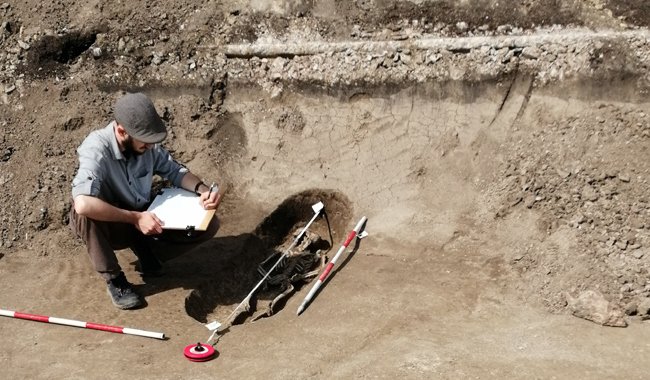 Archaeologists found an Árpád-era cemetery next to Budafoki road
Archaeologists found an Árpád-era cemetery next to Budafoki road
June 30, 2022 at 4:00 PM
The excavations took place from April to June along the Budafoki road, north of the Kondorosi road, one of the surprises of the excavation was the discovery of an Árpád-era cemetery. Traces of the residential buildings of a settlement more than seven thousand years ago were also found in the area.
The archaeologists found a village in the city center from the 13th century, and the excavation is now continuing
June 25, 2022 at 3:00 PM
Archaeologists last worked 25 years ago in the courtyard of the downtown Károlyi Palace, under 16 Károlyi street, on the site of the home of the Petőfi Literary Museum. At that time, among other things, an 11th-12th century cemetery, 23 graves, a 13th century village and the stone cellar and food storage of a Turkish house were excavated. Excavations are now continuing again.
Original decorative fireplaces were found during the research of the Buda Castle
May 12, 2022 at 1:00 PM
The experts of the Várkapitányság discovered another valuable find during the research carried out in the Buda Castle, as they found a marble fireplace in the dining room between the royal and princely suites, in addition to the ornamental fireplaces of the former Andrássy and Deák foyers in the Krisztinaváros wing. The finds will make a significant contribution to the most authentic reconstruction possible, as the fireplaces have always been in keeping with the room, so they can provide an important point of reference.
A medieval cellar was found on the outskirts of Budapest
May 10, 2022 at 2:00 PM
On the border of Budakalász and the Barát stream, in addition to several prehistoric finds, the remains of a medieval cellar have also been found. The cellar may have belonged to the medieval village of Kissing, and probably dates back to the 13th century.
Archaeologists may have found a medieval cemetery in the 11th district
April 28, 2022 at 2:00 PM
Among the prehistoric traces, the staff of the Budapest History Museum presumably found medieval burials next to Budafoki street in Újbuda. Traces of Stone Age finds and buildings have been found in the area before, now the former cemetery of the village of Kocsola, which was destroyed in the Middle Ages, has probably been found.
Valuable finds were discovered during the research in the Buda Castle
March 29, 2022 at 6:00 PM
Special finds were found during the wall research and basic excavation of the Buda Castle Palace. The fragments, walls and tiles that have just been unearthed are significant because they can help determine exactly what the palace, which was enlarged at the turn of the last century, was based on the plans of Alajos Hauszmann, looked like.
They were looking for the old Pest city walls after a pipe burst in Pest
January 28, 2022 at 9:00 AM
Pipe bursts occur. Sometimes they are just unpleasant, sometimes they cause serious damage, and rarely do they lead to interesting discoveries. This happened in the city centre, where in 1972, following a pipe burst, it was believed that a section of the old Pest city wall had come to light.
Traces of a seven-thousand-year-old village were found in the 11th district
November 9, 2021 at 2:30 PM
Archaeologists excavated the remains of a seven thousand years old settlement in the 11th district on Madárhegy. Fragments of mainly pottery and animal bones left behind by Stone Age people were found in the pits.
Roman burials were excavated in Óbuda
August 27, 2021 at 2:30 PM
Experts from the Budapest History Museum found a late Roman burial on one of the plots on Óbuda Street, where the remains of a stone wall and storage pits have also been found.
An ancient swastika was found on the grounds of Buszesz
August 3, 2021 at 5:00 PM
The excavation work has entered a new stage in the area of the former distillery in Óbuda, the archaeologists of the Budapest History Museum found Roman coins, a crescent-shaped military mounting made of bronze, and a bronze clothespin depicting a swastika.
Unknown Roman cemetery found in Nagytétény, near the former Campona fortress
June 18, 2021 at 4:00 PM
The Campona Fortress included a recently excavated Roman cemetery, which archaeologists found in Nagytétény during the preparation of a development project. The staff of the Budapest History Museum identified almost sixty graves; coins, pots, vials, and a ceramic candle were also found.
Intact utensils found in a medieval well excavated under the National Guard Headquarters
June 12, 2021 at 3:30 PM
The everyday life of the former inhabitants of Buda Castle can be studied through the objects, especially the ceramic jugs and glasses, which were found during archaeological research in the area of Dísz Square – Szent György Square, on the basement level of the Honvéd ('national guard') Headquarters. Most of the finds were hidden in the depths of an identified well.
Cannonballs found in the Danube near Chain Bridge
May 29, 2021 at 12:00 AM
Archaeologists have found two medieval carved stone cannonballs in the Danube riverbed. One is so huge that they were unable to bring it to the surface. The projectiles may be from the late Middle Ages. Many other valuable archaeological finds have also been unearthed.
Coins and metal works from the Hungarian conquest of the Carpathian Basin found on construction site
May 15, 2021 at 4:00 PM
An excavation is taking place in the 11th District on Rupp Hill. Archaeologists are reviewing the area before construction. Although the site is mainly Roman, valuable objects from other eras have been found; such as medieval coins, metal works from the Hungarian conquest of the Carpathian Basin and the foundations of a building from the 2nd or 3rd century.
Artefacts found at 14th century castle wall
May 3, 2021 at 2:00 PM
The finds from the Anjou or Sigismund-era constructions were found near the castle walls of the Royal Palace of Buda Castle, in the New World Garden. Staff from the Budapest History Museum completed the excavations. The finds are of particular importance because little is known about the Anjou-era parts of the palace.
Archaeologists unearth early Bronze Age tombs in Csepel – Finds reveal scattered ash burials
February 6, 2021 at 4:30 PM
Archaeological excavations within the Csepel Freeport have uncovered artefacts from the Early Bronze Age. Although the material of the prehistoric pits is still being studied, the site of scattered ash-rite burials dating back to the Early Bronze Age is especially of note. Excavations have revealed ten vessels, making it clear that Csepel has been inhabited since prehistoric times.
The lid of a Venetian cure-all and a medieval staircase have been unearthed in the newest cultural area in Buda Castle
August 7, 2020 at 11:00 AM
The outdoor site of 9 Táncsics Street has been reborn as the T9 - The First Bastion archaeological exhibition and cultural community space. The former József Barracks and Prison building is continuously revealing the layers of its history. During the current archaeological excavation, the remains of a medieval and Ottoman building that used to stand here have emerged from under the floor of the house.
More articles
 The „intertwined history” of the bridges and the city of Budapest
Which ideas and events have shaped the fate of bridges of Budapest and the cityscape? Alongside many other interesting facts, this question is also answered this newly published book by the Budapest City Archives, which introduces the history of bridges in Budapest.
The „intertwined history” of the bridges and the city of Budapest
Which ideas and events have shaped the fate of bridges of Budapest and the cityscape? Alongside many other interesting facts, this question is also answered this newly published book by the Budapest City Archives, which introduces the history of bridges in Budapest.
 The Bridge Report, which brought a turning point in the history of Budapest
A travel report that changed the history of Pest and Buda, as well as Hungary. The little book contributed to the change of half a thousand years of legal customs and the implementation of an investment of unprecedented size and technical quality. This book was The Bridge Report [Hídjelentés in Hungarian].
The Bridge Report, which brought a turning point in the history of Budapest
A travel report that changed the history of Pest and Buda, as well as Hungary. The little book contributed to the change of half a thousand years of legal customs and the implementation of an investment of unprecedented size and technical quality. This book was The Bridge Report [Hídjelentés in Hungarian].
 Drama on the university wall - The heroic monument was planned 95 years ago
In the constant hustle and bustle of the Egyetem Square in Pest, the students may not even notice the monument that decorates the short section of wall between the church and the central building of ELTE. However, it commemorates their predecessors, the heroes who fought for their country in World War I, and those who heroically helped them. The first design of the dramatically collapsing soldier was born in 1928, ninety-five years ago.
Drama on the university wall - The heroic monument was planned 95 years ago
In the constant hustle and bustle of the Egyetem Square in Pest, the students may not even notice the monument that decorates the short section of wall between the church and the central building of ELTE. However, it commemorates their predecessors, the heroes who fought for their country in World War I, and those who heroically helped them. The first design of the dramatically collapsing soldier was born in 1928, ninety-five years ago.

